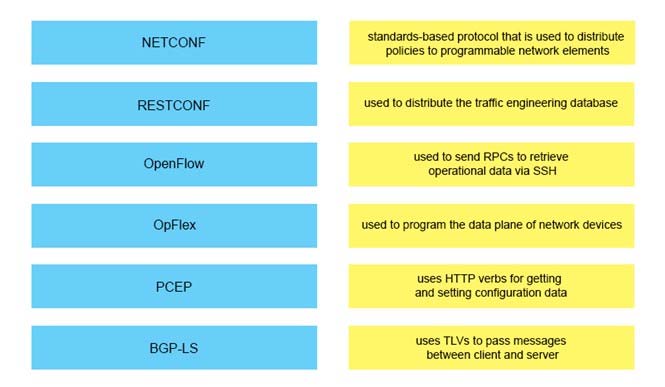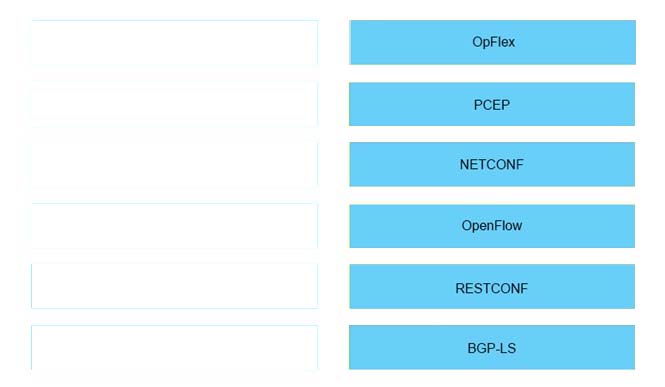Cisco® 300-550 Exam Practice Questions (P. 1)
- Full Access (70 questions)
- Six months of Premium Access
- Access to one million comments
- Seamless ChatGPT Integration
- Ability to download PDF files
- Anki Flashcard files for revision
- No Captcha & No AdSense
- Advanced Exam Configuration
Question #1
How are authentication credentials sent in a Cisco APIC REST API authorization request?
- Aby using OAuth
- Bin a token in the header
- Cby using Basic Auth
- Din JSON in the payload
Correct Answer:
B
Authentication to the REST API for username/password-based authentication uses a special subset of request URIs, including aaaLogin, aaaLogout and aaaRefresh as the Dn target of a POST operation. Their payloads contain a simple XML or JSON payload containing the MO representation of an aaaUser object with attributes name and pwd defining the username and password, for example: <aaaUser name=admin pwd=insieme/>. The response to the POSTs will contain an authentication token as both a Set-Cookie header as well as an attribute to the aaaLogin object in the response named token, for which the XPath is / imdata/aaaLogin/@token if encoded as XML. Subsequent operations on the REST API can use this token value as a Cookie named "APIC-cookie" to have future requests authenticated.
Reference:
http://aci-troubleshooting-book.readthedocs.io/en/latest/rest.html
B
Authentication to the REST API for username/password-based authentication uses a special subset of request URIs, including aaaLogin, aaaLogout and aaaRefresh as the Dn target of a POST operation. Their payloads contain a simple XML or JSON payload containing the MO representation of an aaaUser object with attributes name and pwd defining the username and password, for example: <aaaUser name=admin pwd=insieme/>. The response to the POSTs will contain an authentication token as both a Set-Cookie header as well as an attribute to the aaaLogin object in the response named token, for which the XPath is / imdata/aaaLogin/@token if encoded as XML. Subsequent operations on the REST API can use this token value as a Cookie named "APIC-cookie" to have future requests authenticated.
Reference:
http://aci-troubleshooting-book.readthedocs.io/en/latest/rest.html
send
light_mode
delete
Question #2
Which two statements about OpenFlow are true? (Choose two.)
- AThe OpenFlow flow table contains header fields, counters, and actions
- BOpenFlow automatically determines network forwarding rules.
- COpenFlow interfaces with the management plane
- DOpenFlow is a southbound protocol
- EOpenFlow is an agentless technology, like Ansible
- FOpenFlow is a northbound protocol
Correct Answer:
AF
Reference:
http://archive.openflow.org/documents/openflow-spec-v1.0.0.pdf
AF
Reference:
http://archive.openflow.org/documents/openflow-spec-v1.0.0.pdf
send
light_mode
delete
Question #3
Where is the node-ui.log stored on the Cisco APIC-EM appliance?
- Ain the /var/log/grapevine/services/node-ui directory within the container that is running the node-ui instance
- Bin the Cassandra database instance that is running within the container that is running the node-ui instance
- Cin the /opt/CSCOapicem/logs/node-ui directory within the Cisco APIC-EM appliance root
- Din the /var/log/grapevine/services/node-ui directory within the Cisco APIC-EM appliance root
- Ein the Cisco APIC-EM Cassandra database instance
Correct Answer:
A
A host can be either an appliance, server or virtual machine where Cisco APIC-EM has been installed. Within the hosts are the Linux containers running instances of the Grapevine clients. The Grapevine clients run the different services. The Grapevine root runs as an application on the host itself and not in any Linux containers.
A
A host can be either an appliance, server or virtual machine where Cisco APIC-EM has been installed. Within the hosts are the Linux containers running instances of the Grapevine clients. The Grapevine clients run the different services. The Grapevine root runs as an application on the host itself and not in any Linux containers.
send
light_mode
delete
Question #4
DRAG DROP -
Drag and drop the technology on the left to its appropriate use case on the right.
Select and Place:

Drag and drop the technology on the left to its appropriate use case on the right.
Select and Place:

send
light_mode
delete
Question #5
Which network configuration protocol uses JSON as a data representation format?
- ANETCONF
- BSOAP
- CRESTCONF
- DHTML
Correct Answer:
B
JSON-RPC is an RPC protocol built on JSON, as a replacement for
XML-RPC -
or
SOAP -
. It is a simple protocol that defines only a handful of data types and commands. JSON-RPC lets a system send notifications (information to the server that does not require a response) and multiple calls to the server that can be answered out of order. Example of a JSON-RPC 2.0 request and response using positional parameters.
Reference:
https://en.wikipedia.org/wiki/JSON
B
JSON-RPC is an RPC protocol built on JSON, as a replacement for
XML-RPC -
or
SOAP -
. It is a simple protocol that defines only a handful of data types and commands. JSON-RPC lets a system send notifications (information to the server that does not require a response) and multiple calls to the server that can be answered out of order. Example of a JSON-RPC 2.0 request and response using positional parameters.
Reference:
https://en.wikipedia.org/wiki/JSON
send
light_mode
delete
All Pages

